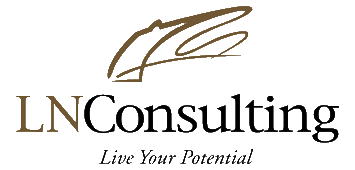Investing in Your Leadership Capital
- Paul Saunders

- May 6
- 3 min read

Leadership capital is the currency of influence, trust, and credibility that leaders accumulate over time. It’s the foundation upon which leaders can inspire, make impactful decisions, and drive meaningful change. Just like financial capital, leadership capital must be developed, invested wisely, and replenished to remain effective.
Understanding Leadership Capital
Leadership capital is the intangible asset that defines a leader’s ability to influence and mobilise others. It consists of several key components:
Credibility – Built through integrity, consistency, and competence.
Trust – Earned by demonstrating empathy, transparency, and ethical decision-making.
Social Capital – Relationships and networks that provide support, collaboration, and resources.
Reputation – Shaped by past actions, successes, and the perception of peers and followers.
Here are some current leaders who exemplify strong leadership capital through their influence, credibility, and ability to inspire change:
Satya Nadella (Microsoft CEO) – Nadella has transformed Microsoft’s culture by emphasizing empathy, innovation, and collaboration. His leadership capital is built on his ability to foster a growth mindset within the company and drive technological advancements
Ngozi Okonjo-Iweala (Director-General of the World Trade Organization) – As the first woman and first African to lead the WTO, Okonjo-Iweala has demonstrated resilience and strategic leadership in navigating global trade challenges.
Volodymyr Zelenskyy (President of Ukraine) – Zelenskyy’s leadership capital has been on full display during Ukraine’s defence against Russian aggression. His ability to rally international support and inspire his people has solidified his reputation as a strong and courageous leader.
Developing Leadership Capital
Effective leaders understand that leadership capital is not granted but earned. Here’s how they develop it:
Lead with Authenticity – Authentic leaders inspire trust and respect by being true to their values and principles. They are genuine in their communication and actions.
Cultivate Emotional Intelligence – Leaders with high emotional intelligence can navigate complex interpersonal dynamics, manage their own emotions, and understand the needs of others.
Demonstrate Competence and Expertise – Continuous learning and skill-building help leaders establish authority and credibility in their domain.
Build Meaningful Relationships – Developing strong networks and fostering collaboration enhances a leader’s influence and effectiveness.
Communicate Effectively – Clear, consistent, and persuasive communication strengthens a leader’s ability to inspire and mobilise teams.
Maintaining Leadership Capital
Leadership capital is not a one-time achievement—it requires ongoing investment and
renewal. Leaders can maintain their capital by:
Listening and Adapting – Being open to feedback, learning from experiences, and adjusting strategies accordingly.
Demonstrating Resilience – Navigating challenges with composure and determination reinforces a leader’s credibility.
Empowering Others – Supporting and mentoring others fosters loyalty and strengthens leadership influence.
Maintaining Integrity – Upholding ethical standards and staying true to values sustains trust and respect.
Balancing Vision and Execution – Having a strategic vision while ensuring practical implementation keeps leadership relevant and impactful.
Conclusion
Leadership capital is the foundation for sustained influence and effectiveness. Leaders who invest in authenticity, competence, and strong relationships build a successful lasting legacy of trust and credibility. By continuously developing and maintaining their leadership capital, they ensure their ability to inspire, lead, and drive positive change remains strong.
Leadership is situational to the current environment, and we live in a world where the environment keeps changing. Leaders can no longer rely on their past success to be respected as leaders, they need to continually ensure they have developed and maintain their leadership capital.
Action
To gain further insights and tailor these leadership capital strategies for successfully increasing your leadership capability contact Paulsaunders@LNC.com.au





Comments